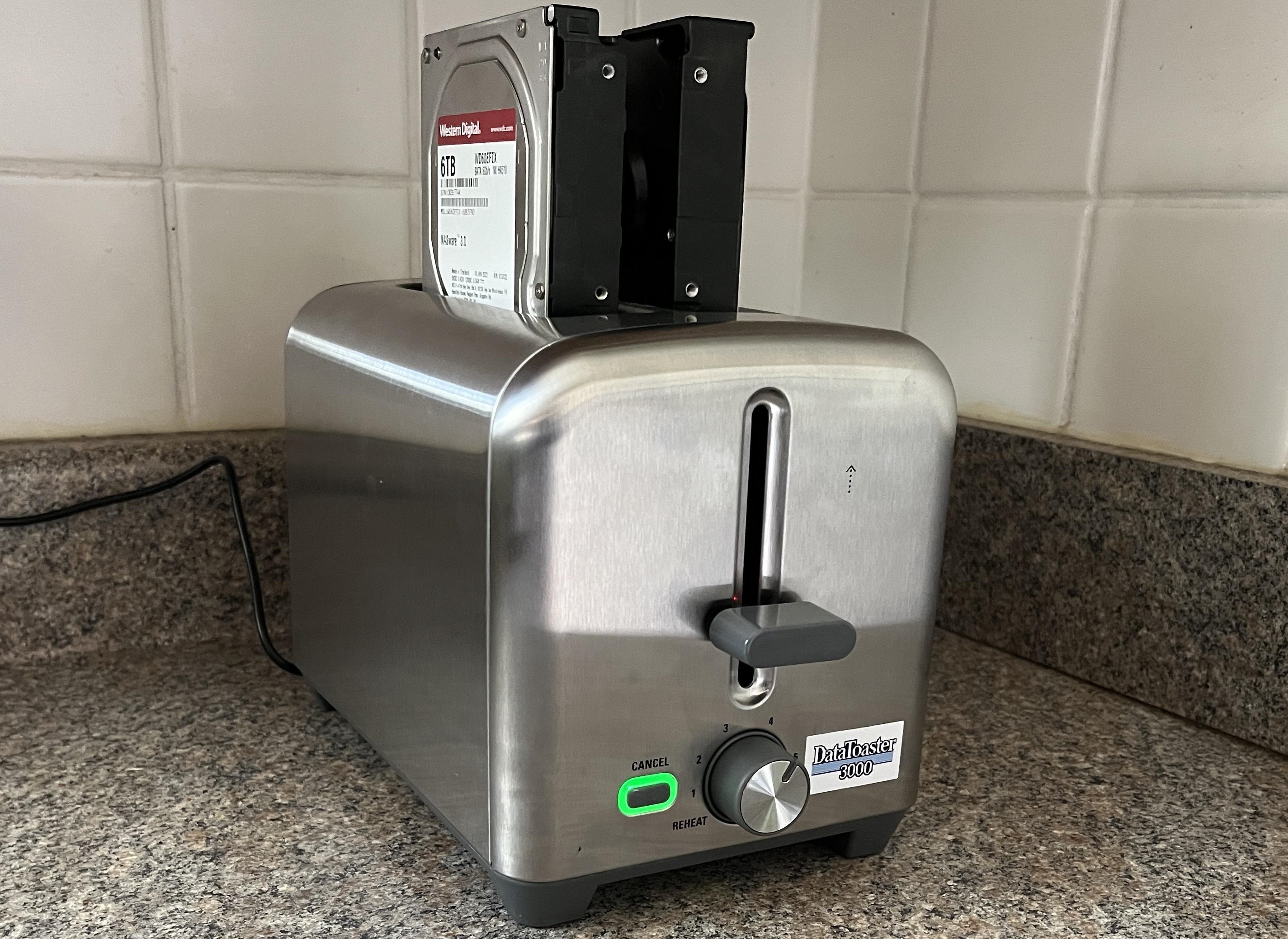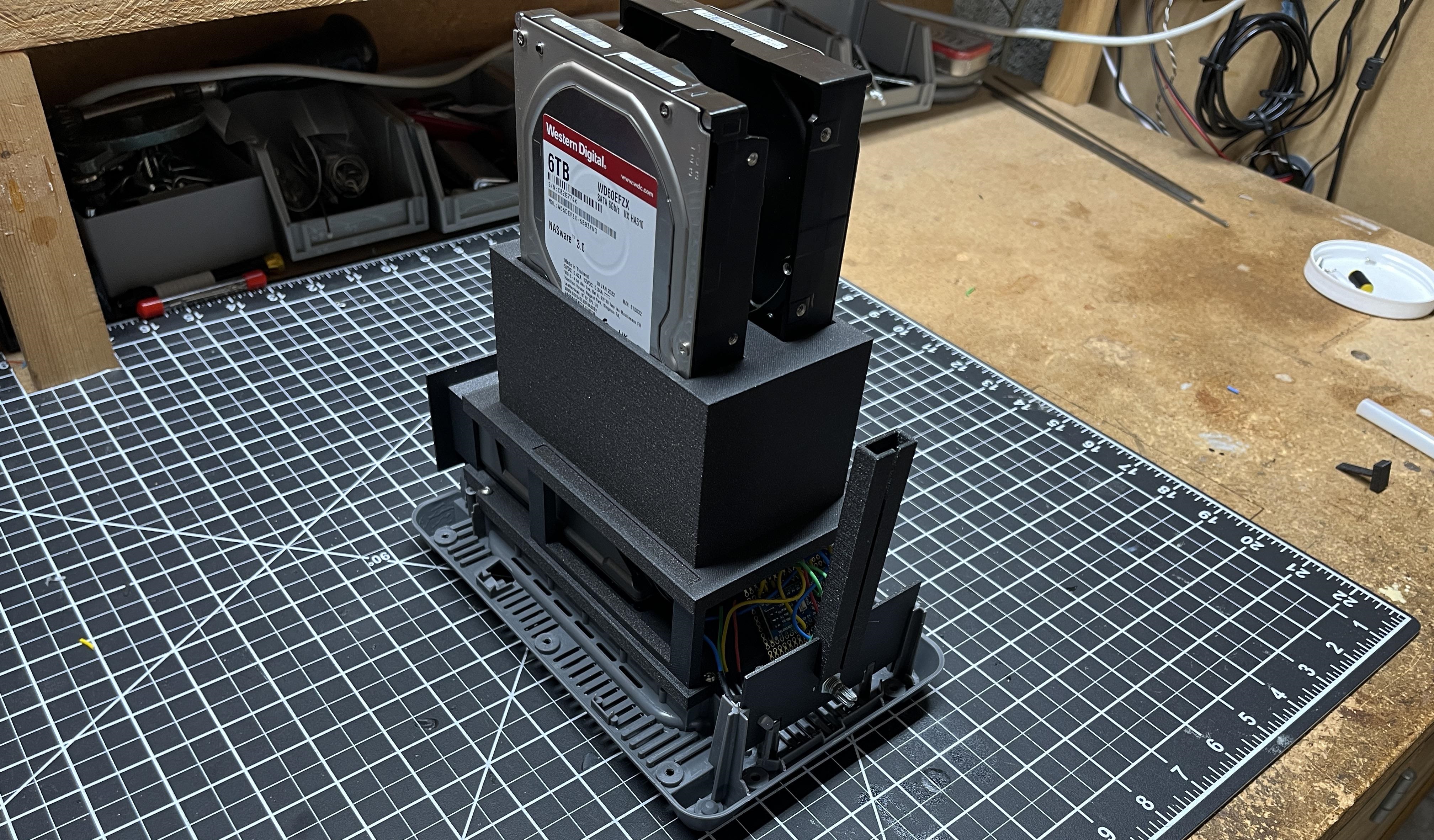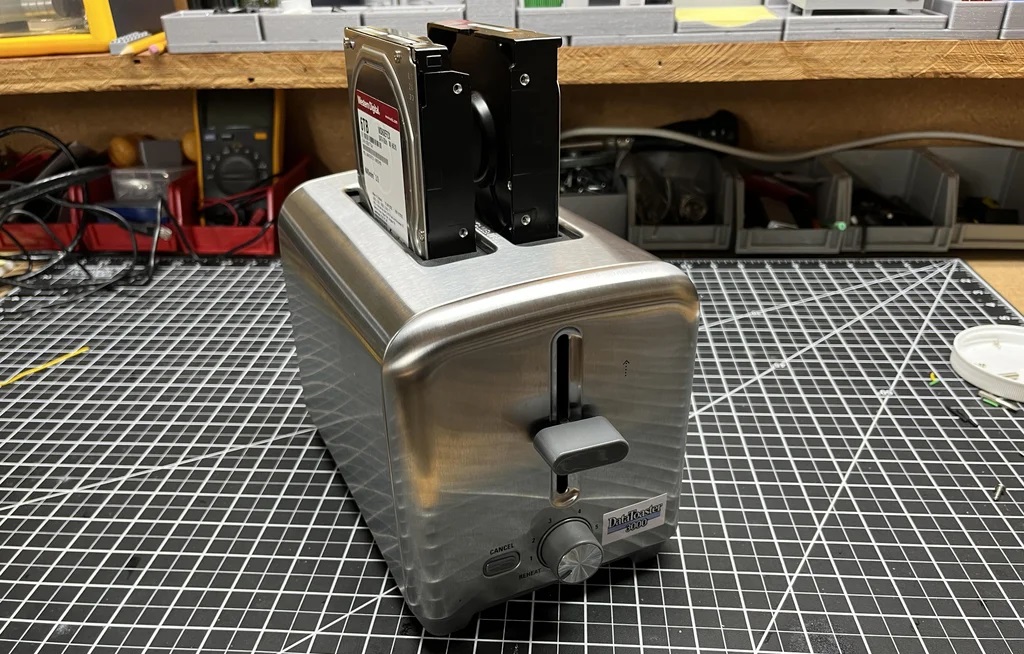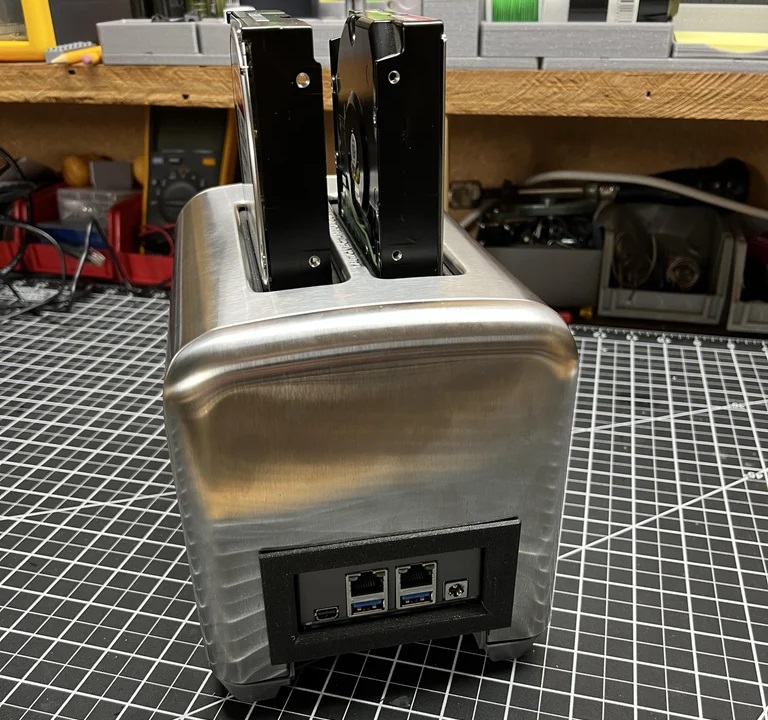
As NAS devices become more and more like everyday appliances for everyday users who need network storage. Alex Meub, a product engineering manager has made the ultimate blend of kitchen appliance and network storage by converting a cheap toaster into a NAS which houses two 3.5-inch mechanical hard drive, giving you a perfectly toasted compact NAS that blends well with the rest of your kitchen appliances. We just hope that Meub removed the heating element and emptied the crumb tray.
The DIY NAS drive, affectionately called the 'DataToaster 3000' is made to accommodate two 3.5-inch mechanical hard drives and from the outside, it looks like a typical toaster. The functional knob is replaced with a potentiometer and an LED light. The toaster internals are gutted to accommodate the hardware required to make this work. You'll need to make cuts into the steel chassis of the toaster and replace a connector, so you'll need the best soldering iron to get the job done. You will also need the best budget 3D printer to print out the housing for the internal casing. Alex posted all the 3D printable layouts and a schematic for building a specific circuit as the means to control the NAS.
Instead of a Raspberry Pi, the DataToaster uses a Zimaboard SBC as a server. We've reviewed the ZimaBlade, a similar device from the same company. This Intel Celeron "Apollo Lake" based SBC comes in a variety of configurations and being an X86 machine, it can run your choice of operating system. Meub chose to run CasaOS (just like the ZimaBlade) for this project. The Zimaboard unique design, heatsink and the I/O ports required a 80mm x 38 mm cut to be made into the toaster. The Zimaboard has dual SATA connectors, dual ethernet and USB Type-A ports with a single Type C port in the rear. The Zimaboard's PCB is modded with a right-angled GPIO header.



The Toaster NAS also uses an Arduino Nano board which takes power from the Zimaboard's 5V GPIO line. The Arduino board uses a potentiometer to control an RGB (common anode) LED, turning the knob will change the color of the LED. Since the toaster already has an area for the LED light and has a passthrough for the potentiometer everything fits like a glove. Meub also provided the schematics for the required connections on the Arduino board.
Alas, the slider is non-functional. Though it would be cool to have the means to eject the drive via the slider, having an ejection system would be complicated and probably not the best idea for a spinning drive. But the slider bar has been retained for aesthetics.
While there are plenty of NAS options to choose from, having a custom-made NAS gives you the ability to choose the parts you need and use the operating system to wish to have, giving you full control of its operating system. The genius of this project is using the toaster as a casing. Making the slots perfect to install a couple of hard drives wasn't an easy task, but works for the overall aesthetic. Meub has provided all of the instructions and 3D prints for those who wish to replicate the DataToaster 3000.







